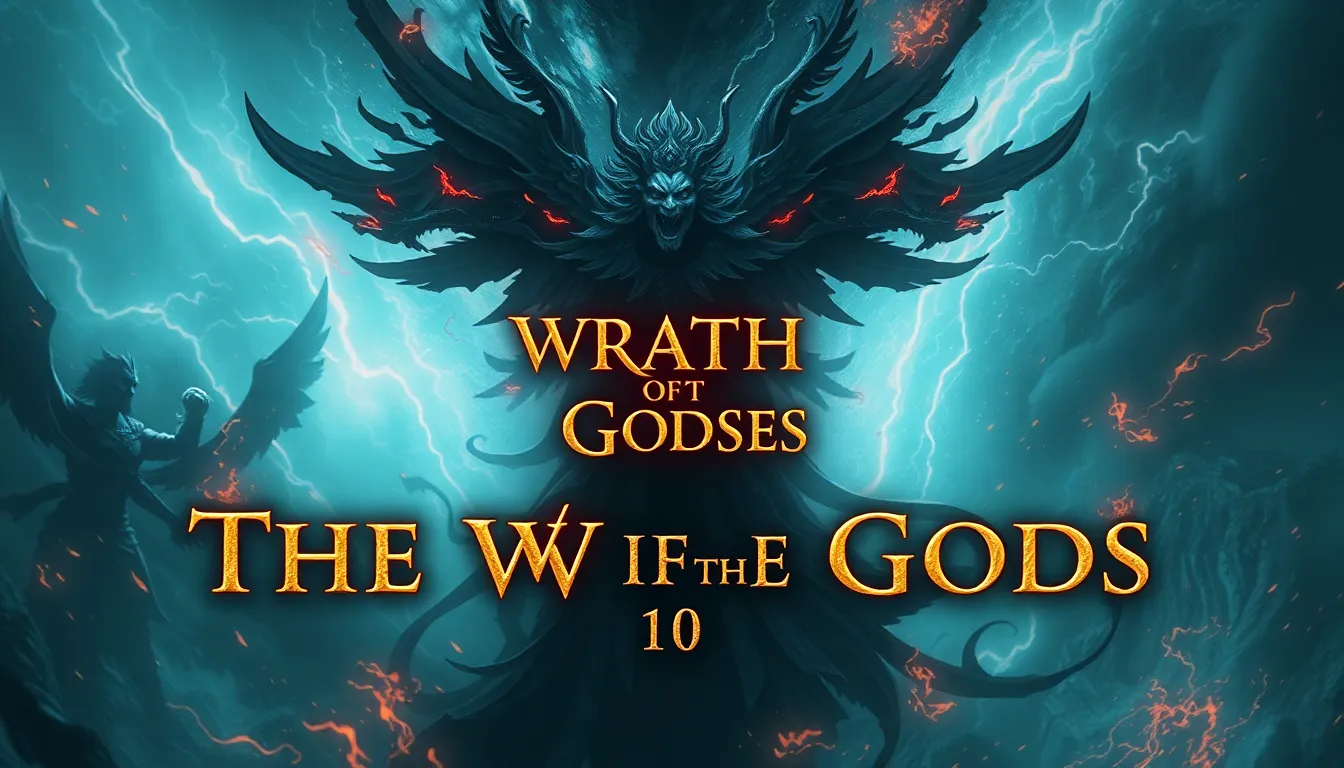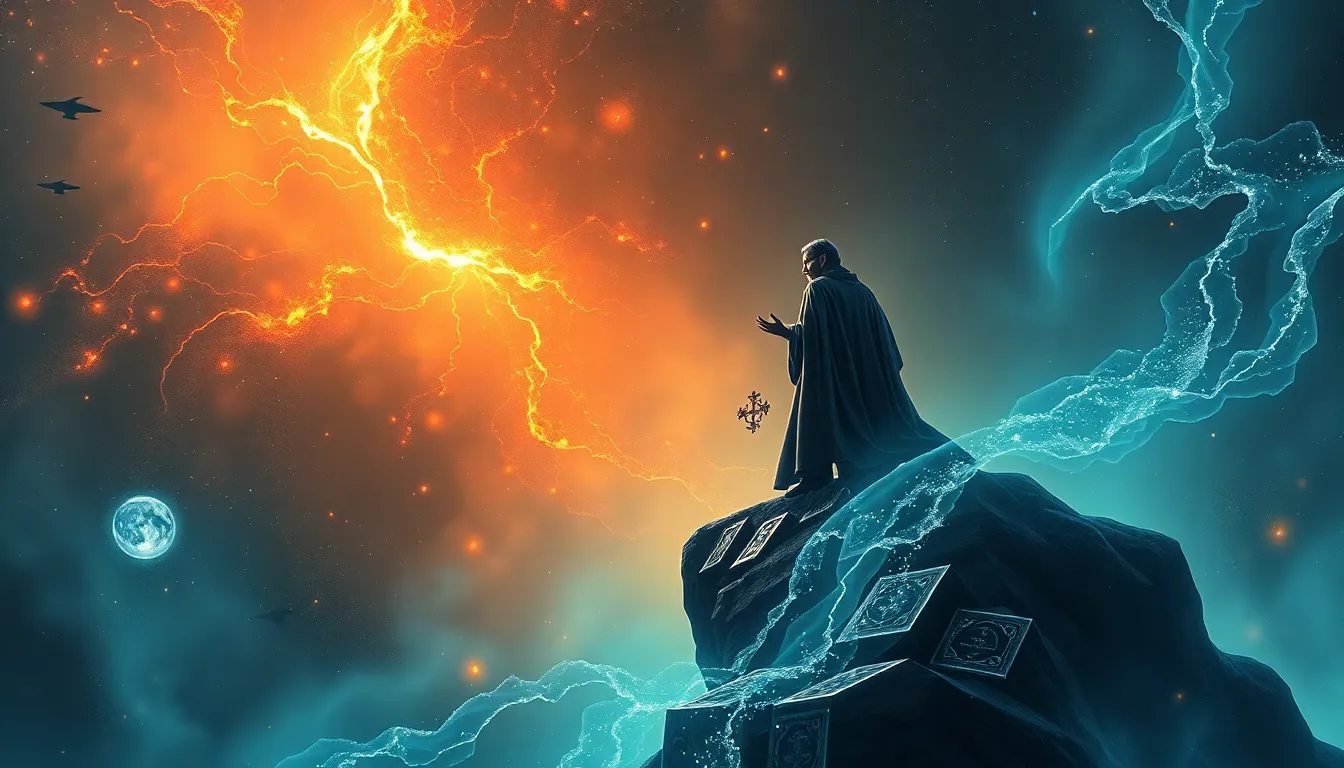The Wrath of the Gods: Legendary Tales of Divine Retribution
I. Introduction
Divine retribution refers to the concept of punishment inflicted by deities on mortals for their transgressions. This theme resonates through various mythologies, highlighting the moral fabric of societies and the consequences of human actions. Throughout history, myths of divine retribution have served not only as cautionary tales but also as reflections of cultural values and beliefs.
This article explores the rich tapestry of divine retribution in various mythologies, examining its historical context, key stories, and moral lessons. Each section delves into different cultures, showcasing how the wrath of gods has shaped human understanding of justice and morality.
II. Historical Context of Divine Retribution
In ancient civilizations, the gods were seen as powerful beings who played a crucial role in the lives of mortals. Their favor or wrath could determine success or failure, prosperity or ruin. As a result, myths of divine retribution were integral to understanding the relationship between humans and the divine.
The cultural significance of retribution myths can be observed in the following ways:
- Establishing moral guidelines and expectations for behavior.
- Explaining natural disasters or societal misfortunes as acts of divine displeasure.
- Reinforcing social norms and community values through shared stories.
When comparing divine retribution across different cultures, it becomes clear that while the specific deities and narratives may vary, the underlying themes of justice, morality, and consequence remain consistent.
III. Greek Mythology: The Fury of the Olympians
In Greek mythology, the Olympian gods were known for their temperamental nature and often enacted swift retribution against mortals who defied them. Key tales include:
- Prometheus: His act of stealing fire for humanity led to eternal punishment by Zeus, showcasing the consequences of defiance against divine order.
- Arachne: A talented weaver who claimed superiority over Athena faced transformation into a spider after a contest, illustrating the dangers of hubris.
The concept of hubris—excessive pride or self-confidence—was a recurring theme in Greek myths, often leading to dire consequences. The Furies, or Erinyes, were deities tasked with punishing those who committed grave offenses, emphasizing the relentless nature of divine justice.
IV. Norse Mythology: Wrath of the Aesir
Norse mythology is rich with tales of vengeance and divine retribution. Odin and Thor, two of the principal gods, often took on roles as enforcers of justice. Key stories include:
- Odin’s pursuit of vengeance: His quest for knowledge often led to retribution against those who wronged him or his kin.
- Thor’s battles with giants: Thor’s hammer, Mjölnir, was not only a weapon but also a symbol of his role as a protector of gods and humans alike.
The significance of Ragnarök, the apocalyptic battle that results in the death of many gods, serves as a powerful symbol of divine retribution, where order is restored through chaos. Norse myths often emphasize the themes of fate and moral lessons, urging mortals to consider the consequences of their actions.
V. Hindu Mythology: The Dance of Destruction
In Hindu mythology, gods such as Shiva and Kali embody the dual nature of creation and destruction. Their tales often highlight the cyclical nature of life and the enforcement of cosmic justice. Key stories include:
- The destruction of evil: Shiva’s dance, known as the Tandava, signifies the destruction of evil forces and the restoration of dharma (cosmic order).
- Kali’s wrath: She is often depicted as a fierce goddess destroying demons, representing the protective aspect of divine retribution.
The cyclical nature of creation and destruction is a central theme in Hindu beliefs, illustrating that divine retribution is not merely punishment but also a necessary aspect of the universe’s balance.
VI. Egyptian Mythology: The Balance of Ma’at
In ancient Egypt, the concept of Ma’at represented truth, balance, and order. The gods played crucial roles in maintaining this balance, with figures like Set and Osiris embodying aspects of retribution. Key points include:
- Set’s conflict with Osiris: Set’s murder of Osiris and the subsequent resurrection by Isis highlight the struggle between chaos and order.
- The judgment after death: The weighing of the heart against the feather of Ma’at determined the fate of souls, illustrating the ultimate divine retribution.
Myths surrounding Ma’at emphasize the importance of maintaining order and justice, with divine retribution serving as a mechanism for upholding these values.
VII. Indigenous Mythologies: Retribution in Nature
Indigenous cultures, such as Native American and Aboriginal peoples, possess rich mythologies that emphasize the interconnectedness of life and the consequences of disrespecting nature. Key elements include:
- Tales of nature’s wrath: Stories often depict natural disasters as retribution for human actions that violate sacred laws.
- Respect for nature: Many myths highlight the importance of living in harmony with the environment, illustrating the consequences of greed and exploitation.
These stories serve as powerful reminders of the moral lessons embedded in the natural world, reinforcing the idea that divine justice extends beyond human interactions.
VIII. Modern Interpretations and Adaptations
The ancient tales of divine retribution continue to resonate in contemporary storytelling. Their influence can be seen in various forms of media, including:
- Film: Movies often draw upon mythological themes of vengeance and justice, showcasing the timeless nature of these narratives.
- Literature: Modern books frequently adapt myths to explore contemporary issues of morality and consequence.
- Art: Visual representations of divine retribution often reflect societal values and cultural heritage.
The relevance of these stories in modern society lies in their ability to provoke thought about justice, morality, and the human experience.
IX. Moral Lessons from Divine Retribution Tales
The tales of divine retribution often convey common themes that resonate with audiences across cultures:
- Justice: The idea that wrongdoings will ultimately be punished.
- Morality: The importance of ethical behavior and adherence to societal norms.
- Consequences: The notion that actions have repercussions, both in this life and beyond.
These narratives reflect societal values and serve as cautionary tales that encourage individuals to consider the impact of their choices. The psychological impact of belief in divine retribution can influence behavior, instilling a sense of accountability among individuals.
X. Conclusion
In summary, the theme of divine retribution is a powerful and enduring aspect of mythology that transcends cultures and eras. From the vengeful Olympians to the protective spirits of nature, these tales highlight the complex relationship between humans and the divine. The enduring legacy of divine retribution in human culture serves as a reminder of the importance of justice, morality, and the consequences of our actions.



